Carcass of dead animal with bird-like beak and fur on its tail poses new questions.
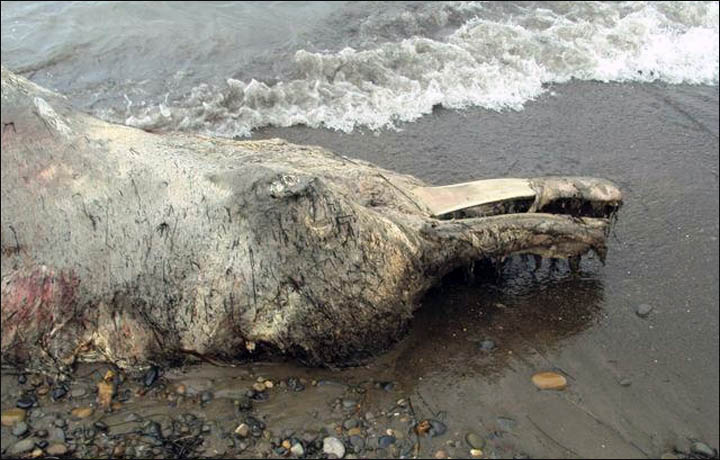
‘At first glance we saw what looked like the muzzle of a dolphin. But after a closer look we saw it had big jaws of approximately 70 centimetres with rotten teeth.’ Picture: Olga Begunova
The mystery of the strange sea ‘monster’ washed ashore on Sakhalin Island in the Russian Far East – and highlighted this week by The Siberian Times – may never be solved after it was swept out to sea once more during a storm.
‘The body was about two metres long though it was difficult to judge, and went into a tail of about three to five metres. The creature was hairy, with some paws or feet, and no fins. We were very confused that everything was covered with hairs.’
But there was new intrigue today after a local resident gave a graphic account of the remains, suggesting a bony protrusion from its underside could be paws or feet, and adding that it had no fins. This witness also suggested it was much longer than initial reports.
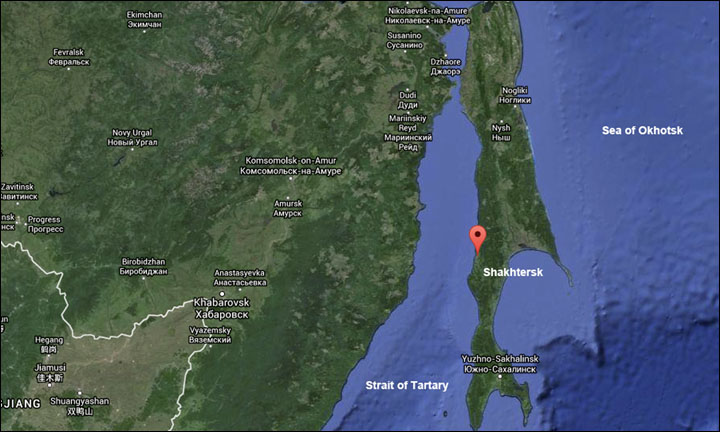
Pictures of the remains, which were found on coastline near the island’s Shakhtersk Airport have been shown around the world after being taken by local people. Picture: The Siberian Times
Scientists were unable to study the carcass of the unidentified animal, which was at first said to be about twice the size of a human and had a huge nose like a bird’s beak.
Most curious of all was the fact it also had fur on its tail and was unlike anything ever seen in Russia.
Pictures of the remains, which were found on coastline near the island’s Shakhtersk Airport have been shown around the world after being taken by local people.
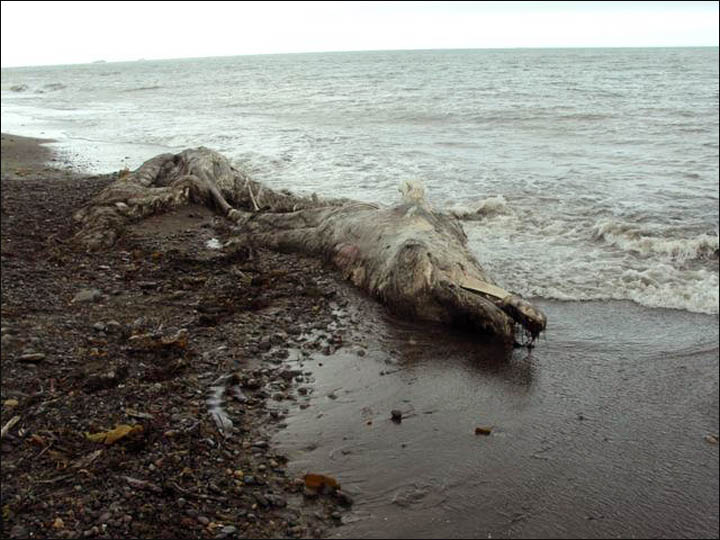
.
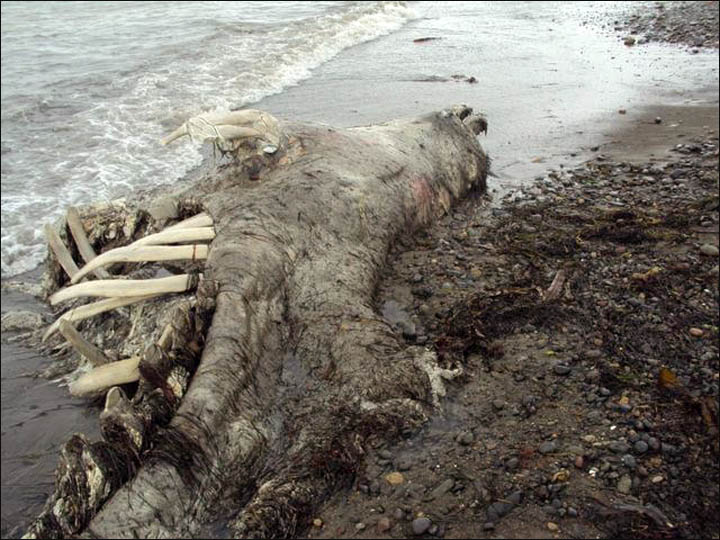
‘The body was about two metres long though it was difficult to judge, and went into a tail of about three to five metres.’ Pictures: Olga Begunova
Now more images have emerged of the beast – taken before it was washed back out to sea – showing its decomposing body with its bones poking through.
Olga Begunova, 47, who took the pictures, said: ‘At first glance we saw what looked like the muzzle of a dolphin. But after a closer look we saw it had big jaws of approximately 70 centimetres with rotten teeth.
‘The body was about two metres long though it was difficult to judge, and went into a tail of about three to five metres. The creature was hairy, with some paws or feet, and no fins. We were very confused that everything was covered with hairs.’
Scientists and other experts are divided about what the animal is with some saying it is simply a ‘big dolphin’, but others are perplexed by the appearance of fur and its sheer size.
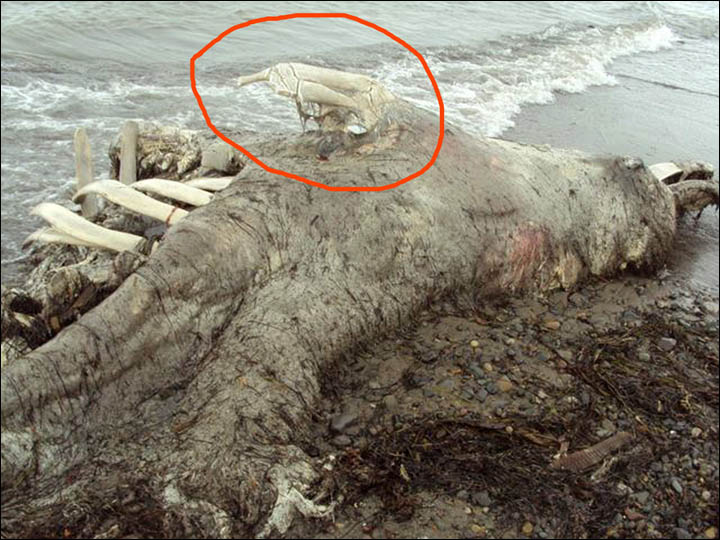
‘The creature was hairy, with some paws or feet, and no fins. We were very confused that everything was covered with hairs.’ Pictures: Olga Begunova
Local fishing control experts, on the other hand, believe it was bottlenose whale.
Nikolay Kim, Deputy Head of the Forecasting department at the Sakhalin Research Institute of Fisheries and Oceanography, said: ‘We assembled a team of scientists and looked at all pictures and came to the conclusion the remains belong to a whale calf. You can never be 100 per cent sure on anything, so let’s say we are 95 per cent sure.
‘First of all, we paid attention to the beak. It points out that the remains belong to a dolphin or a whale. Secondly, we looked at the body size of at least three metres. Dolphins cannot be so huge but the body of whales can be up to 10 metres, and their young reach three or four metres.
‘As to the fur on the creature, all new-born whales and dolphins at the beginning of their life have a small amount of fur, then it disappears.’
He added: ‘Judging by all indications, we think that the animal is a Giant Beaked Whale, or rather, its calf.’
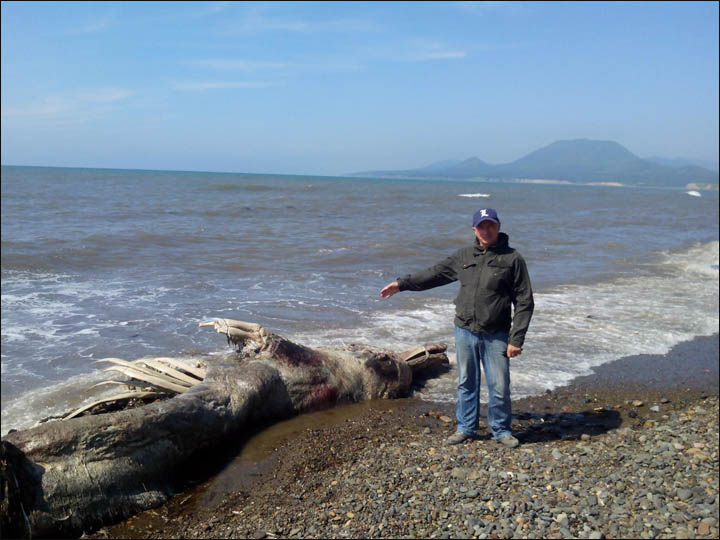
.
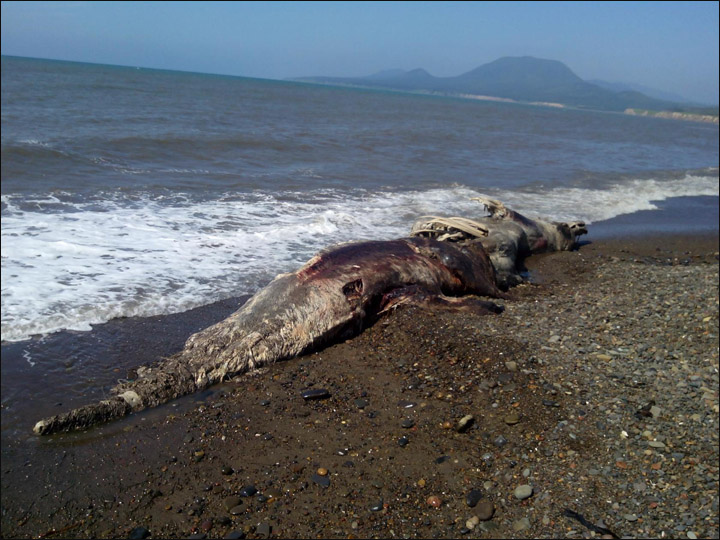
.
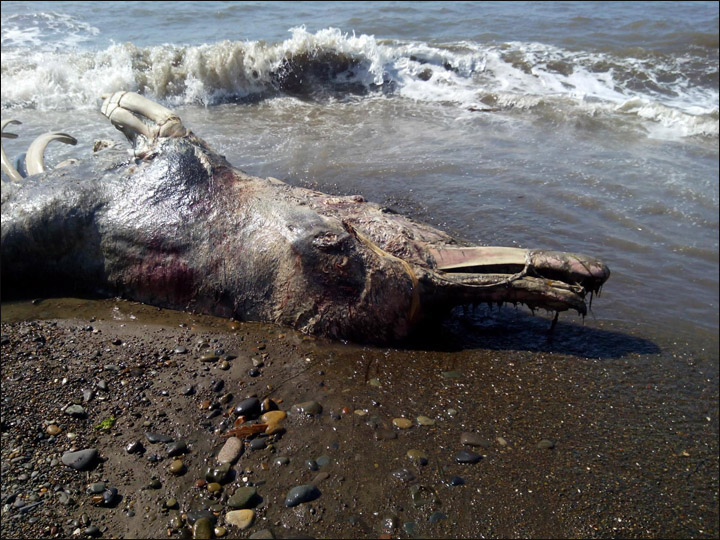
.
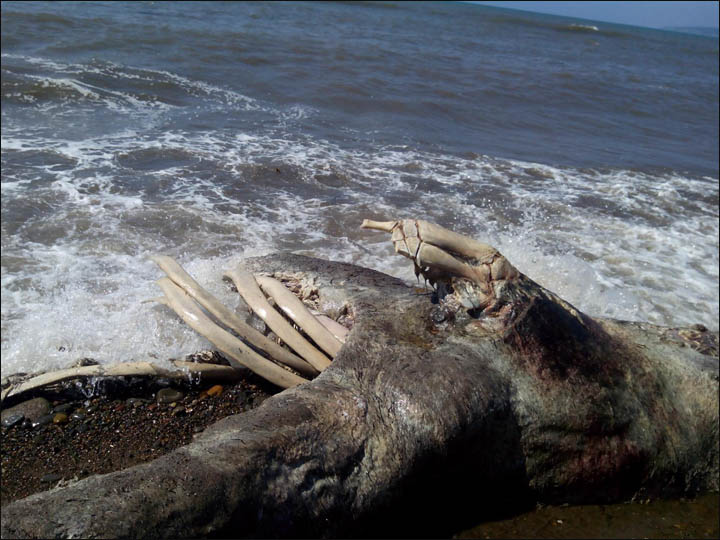
‘Most likely it is a large animal from the family of beaked dolphins. The largest are giant beaked whale.’ Pictures: Alexander Mankov
Vadim Serkov, Deputy Director for Research of the Primorye Oceanarium, agreed with those findings and added: ‘Most likely it is a large animal from the family of beaked dolphins. The largest are giant beaked whale. These are rare and live in the depths therefore are extremely rare on the coast.’
Sergei Kornev, a fellow of the Kamchatka Research Institute of Fisheries and Oceanography, even dismissed the fur as nothing more than ‘bristle’.
He said: ‘When a dead animal spends a lot of time in the water, it is affected by predators and microorganisms. It’s an aggressive environment and soft tissue can be washed away and it looks like ‘bristle’ and in fact is not fur or hair.’
There are about 40 difference species of dolphin in the world with the largest being the Orca, which grows to up to 10m long and is more commonly known as the Killer Whale.